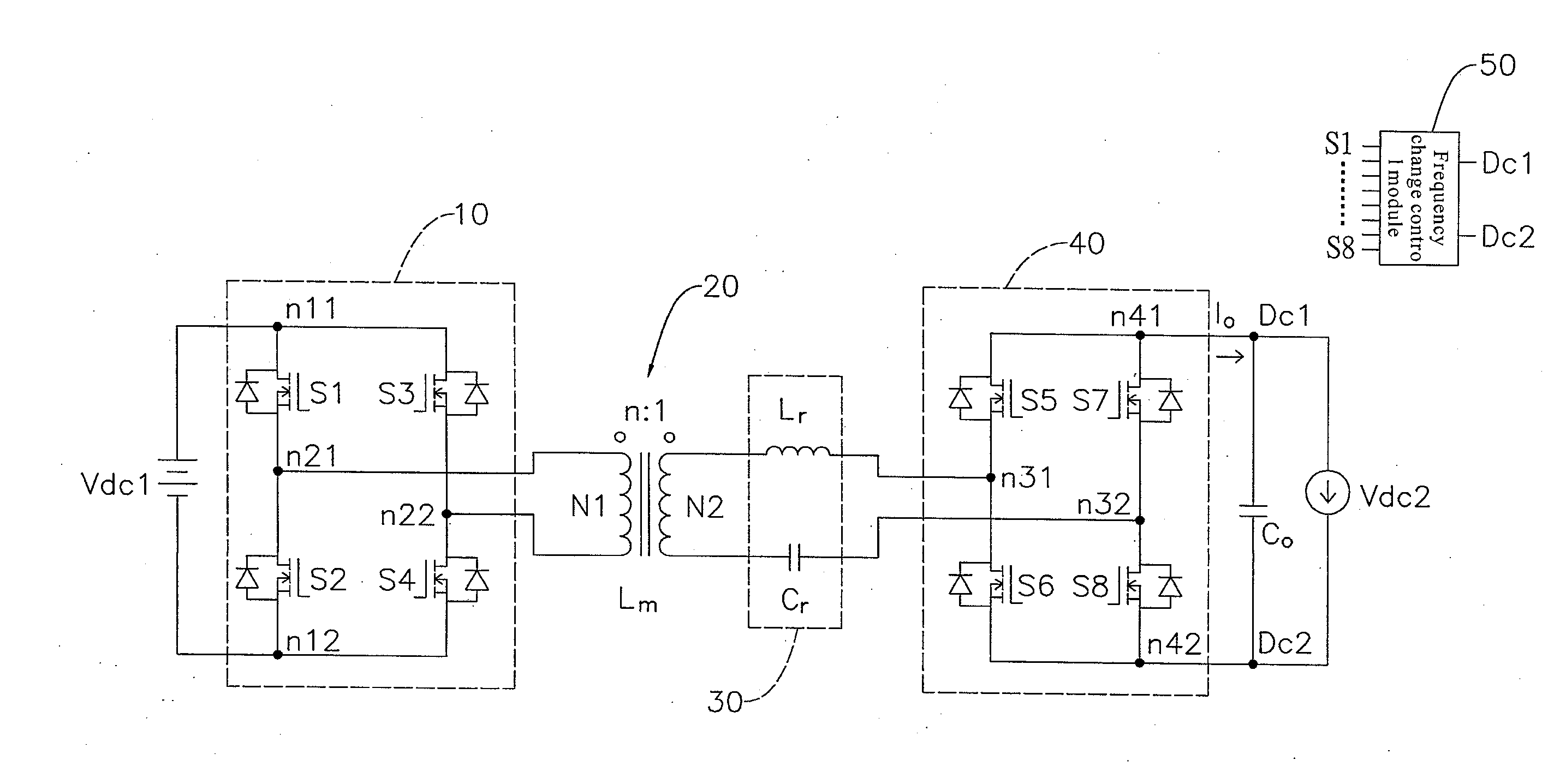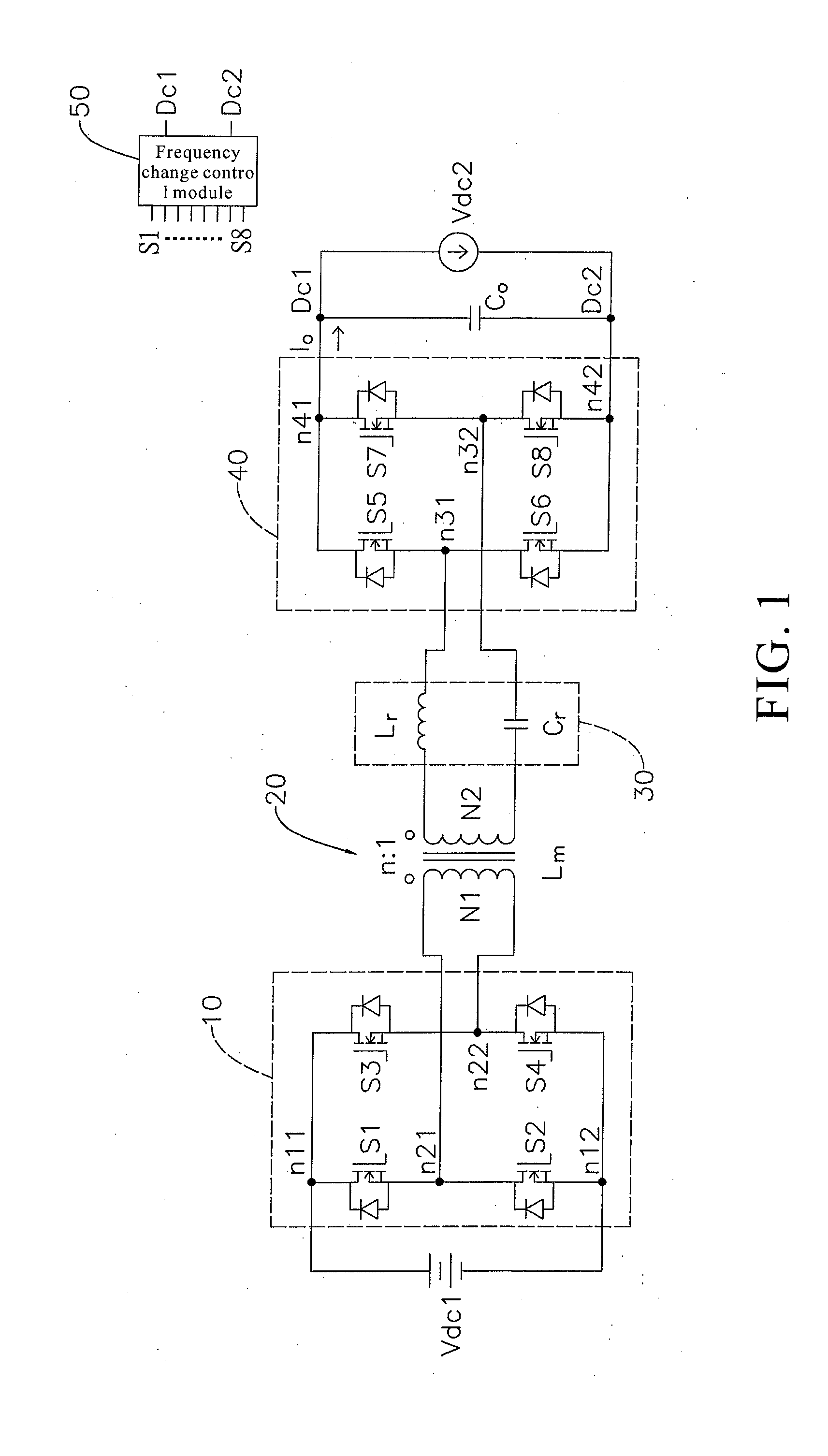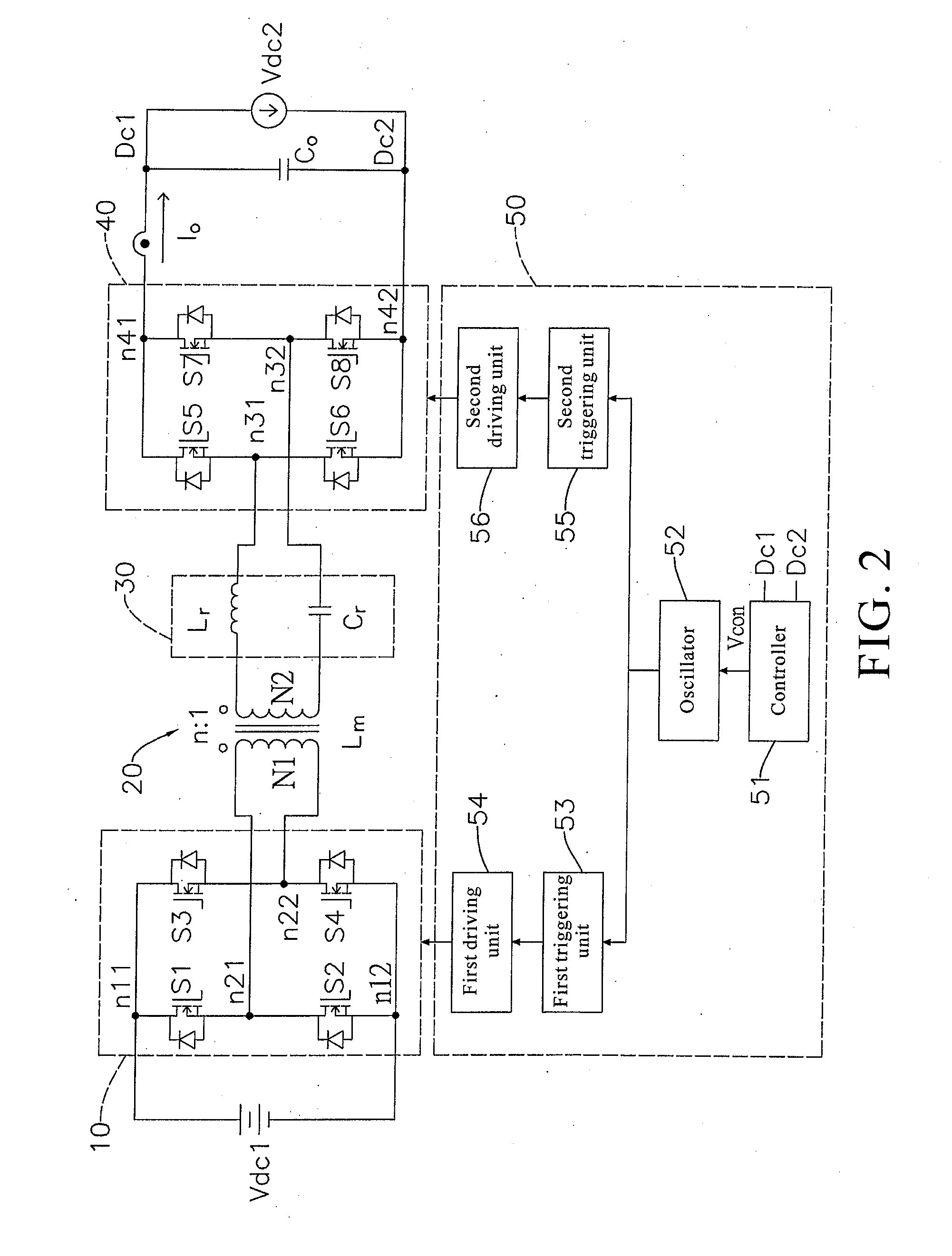Bidirectional dc-dc converter
a dc-dc converter and bi-directional technology, applied in the direction of electric variable regulation, process and machine control, instruments, etc., can solve the problems of reducing the efficiency of dc-dc converters. , to achieve the effect of enhancing voltage conversion performance, reducing power loss, and tolerating large fluctuations of input voltag
- Summary
- Abstract
- Description
- Claims
- Application Information
AI Technical Summary
Benefits of technology
Problems solved by technology
Method used
Image
Examples
first embodiment
[0021]Referring to FIG. 1, there is shown a circuit diagram of a bidirectional DC-DC converter according to the present invention. The bidirectional DC-DC converter applies to a battery-equipped charging and discharging system and especially to stabilizing an output voltage despite large fluctuations of an input voltage. The bidirectional DC-DC converter comprises a first DC power source Vdc1, a second DC power source Vdc2, a first full-bridge switching unit 10, a transformer 20, a resonance unit 30, a second full-bridge switching unit 40, and a frequency change control module 50. In this embodiment, the first DC power source Vdc1 is a chargeable and dischargeable battery, and the second DC power source Vdc2 is connected to an inverter (not shown).
[0022]The first full-bridge switching unit 10 comprises first through fourth switches S1˜S4 and forms two input-oriented first nodes n11, n12 and two output-oriented second nodes n21, n22. The first nodes n11, n12 are connected to the firs...
second embodiment
[0027]The frequency change control module 50 is connected to the first through fourth switches S1˜S4 of the first full-bridge switching unit 10 and the fifth through eighth switches S5˜S8 of the second full-bridge switching unit 40. The frequency change control module 50 detects the state of the second DC power source Vdc2 and instructs the first full-bridge switching unit 10 and the second full-bridge switching unit 40 to operate in accordance with the state of the second DC power source Vdc2. Furthermore, the frequency change control module 50 reduce the power loss of the switches S1˜S8 by zero voltage switching. Moreover, the frequency change control module 50 not only changes the operating frequency and receives a control signal so as to adjust the voltage gain ratio and thus adapts to large fluctuations of the input voltage, but also controls the first full-bridge switching unit 10 and the second full-bridge switching unit 40 to perform boost discharging or buck charging so as ...
PUM
 Login to View More
Login to View More Abstract
Description
Claims
Application Information
 Login to View More
Login to View More - R&D
- Intellectual Property
- Life Sciences
- Materials
- Tech Scout
- Unparalleled Data Quality
- Higher Quality Content
- 60% Fewer Hallucinations
Browse by: Latest US Patents, China's latest patents, Technical Efficacy Thesaurus, Application Domain, Technology Topic, Popular Technical Reports.
© 2025 PatSnap. All rights reserved.Legal|Privacy policy|Modern Slavery Act Transparency Statement|Sitemap|About US| Contact US: help@patsnap.com



